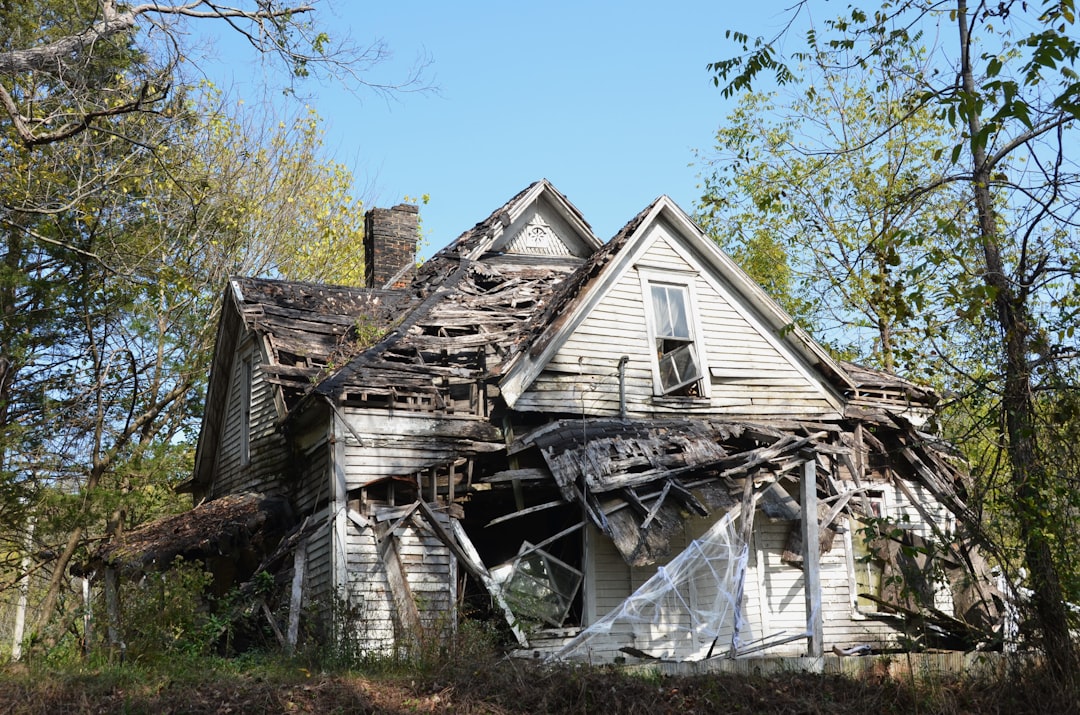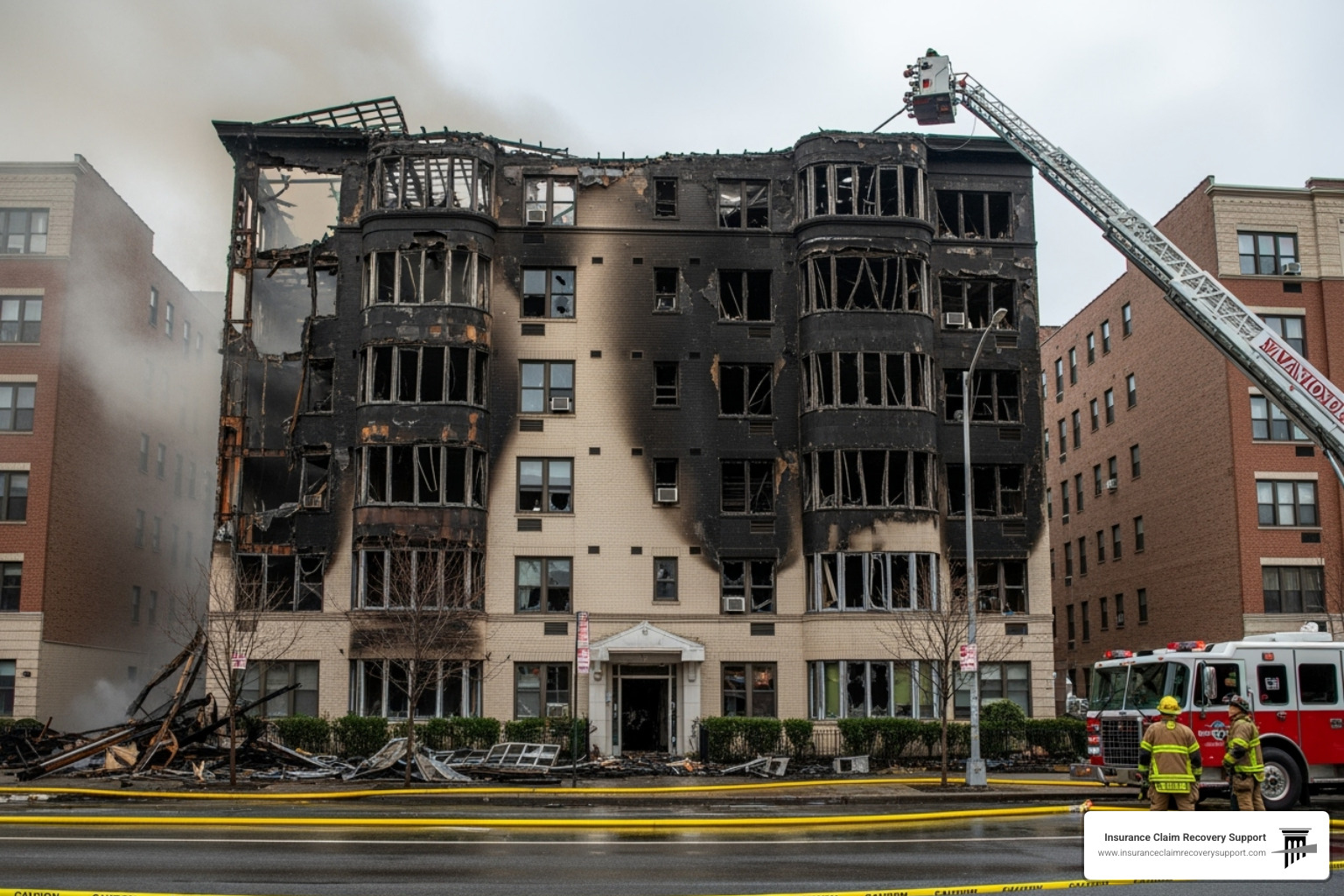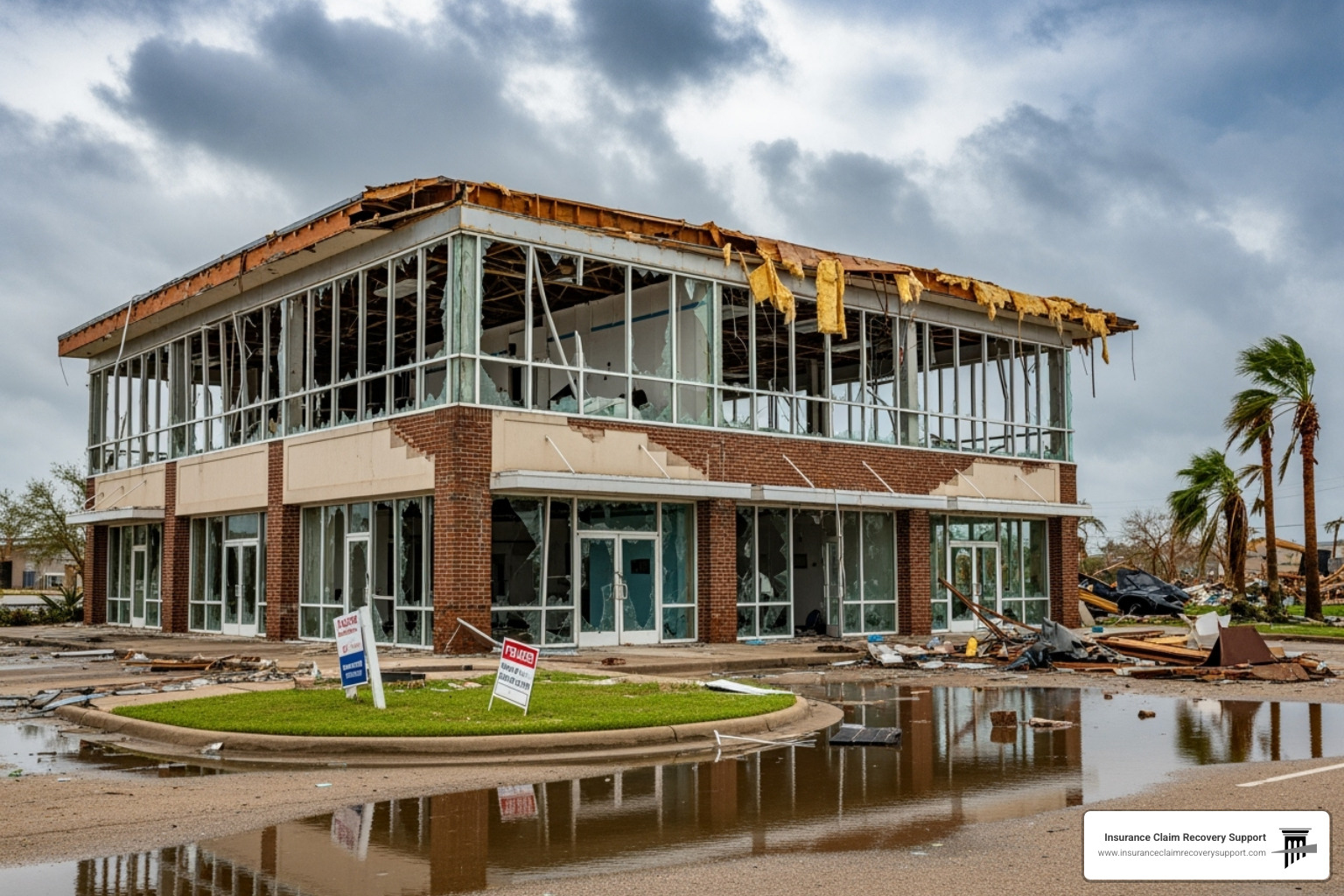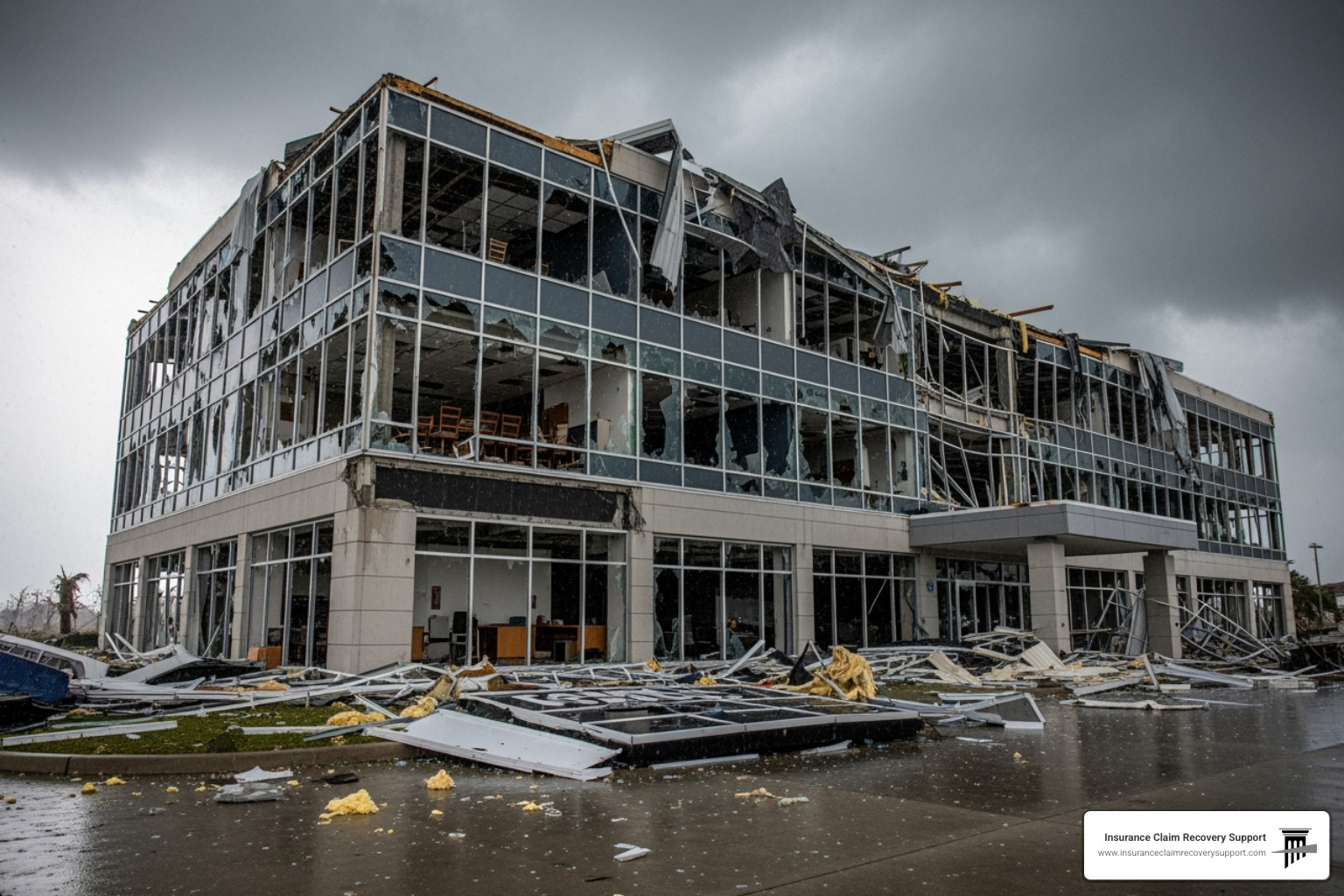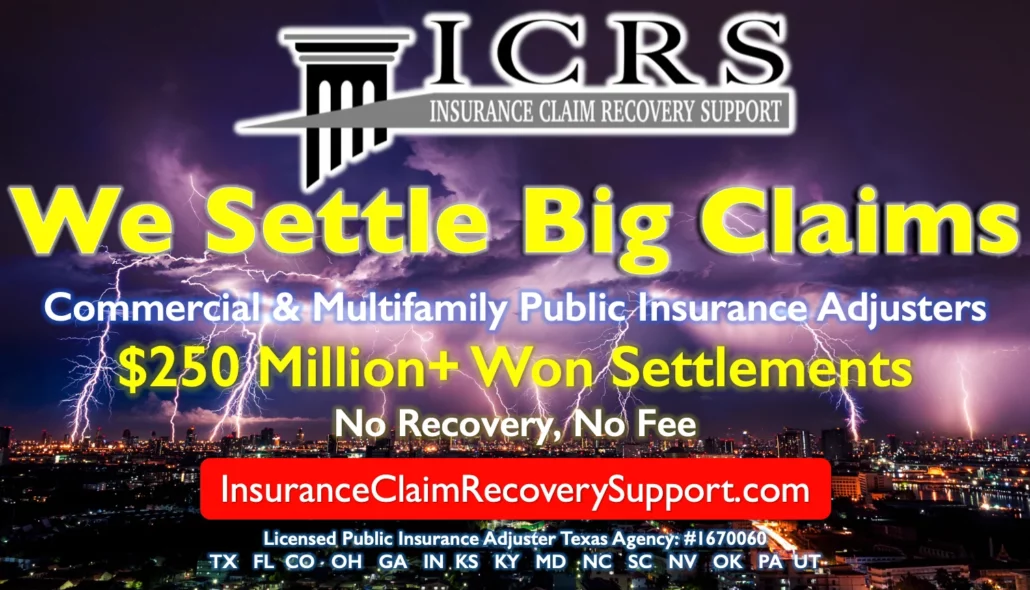Why Homeowner Association Property Damage Insurance Claims Are More Complex Than You Think
Trying to untangle a homeowners association (HOA) insurance claim can feel like piecing together two jigsaw puzzles at once. You have a commercial master policy that protects roofs, hallways, pools, and other shared areas, plus dozens (or hundreds) of individual HO-6 policies covering everything inside each unit. When wind, water, or fire strikes, figuring out which policy pays what—and how much—is rarely straightforward.
Key facts to remember:
- Master policies insure common elements, building exteriors, and association liability.
- Unit owners must carry HO-6 coverage for interior finishes, personal property, and loss assessment.
- Policy type matters: “bare walls” leaves interiors to owners; “all-in” includes original fixtures.
- Typical claims: wind/hail, fire, water escape, storm debris, and slip-and-fall liability.
- Every claim affects renewal premiums—often for three to five years.
- Strict notice, mitigation, and documentation requirements apply in Texas cities such as Austin, Dallas-Fort Worth, San Antonio, Houston, Lubbock, Waco, Georgetown, Round Rock, San Angelo, and Lakeway.
I’m Scott Friedson, multi-state licensed public insurance adjuster and CEO of Insurance Claim Recovery Support LLC. My team has secured more than $250 million for policyholders—including hundreds of HOA and condominium communities—by mastering the fine print, meeting deadlines, and standing up to insurer delay tactics.
Glossary quick links:
Homeowner Association Property Damage Insurance Claims: How Coverage Really Works
More than half of U.S. owner-occupied homes sit inside HOAs, yet many boards still struggle to split responsibilities between master and HO-6 policies.
Master Policy vs. Individual Policy
Master policy (association):
- Roofs, exterior walls, foundations
- Hallways, elevators, clubhouses, pools
- Shared mechanical systems and liability in common areas
- Deductible often $1,000-$25,000+ and assessed to all owners
HO-6 (unit owner):
- Interior walls, flooring, cabinets, appliances
- Personal belongings
- Additional living expense
- Loss assessment coverage for big claims that exceed master limits
“Bare Walls” vs. “All-In” Language
- Bare walls (“studs-in”): master stops at the sheetrock; owner pays for interior rebuild.
- All-in (“single-entity”): master covers original finishes; owner handles upgrades and contents.
Directors & Officers and CGL
Property insurance repairs buildings; Directors & Officers (D&O) protects volunteer board members from lawsuits alleging mismanagement; Commercial General Liability (CGL) covers bodily injury or property damage to third parties. A plumbing failure that floods units might trigger all three.
Knowing which coverage applies—and in what order—prevents expensive gaps when storms hit Austin, Dallas-Fort Worth, San Antonio, Houston, Lubbock, Waco, or San Angelo.
What’s Covered and What’s Not: Perils, Exclusions, and Adequacy Checks
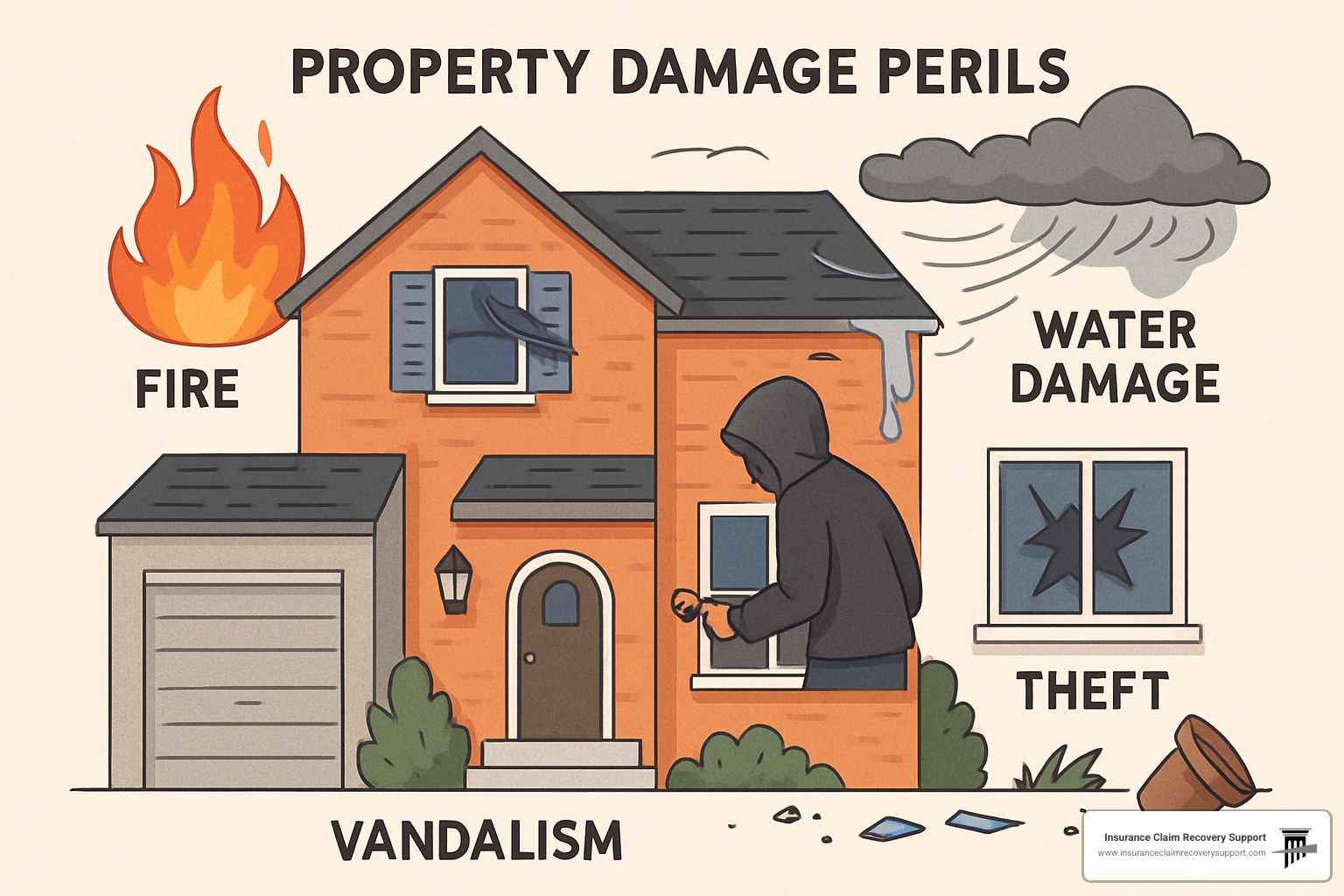
Covered perils usually include fire, lightning, wind, hail, sudden water discharge, vandalism, theft, and explosion. However, most master policies exclude:
- Flood (needs a separate policy from the National Flood Insurance Program (NFIP) or a private carrier)
- Earth movement or earthquake (endorsement required)
- Ongoing leaks, wear & tear, mold, or pollution unless caused by a covered peril
- War, terrorism, intentional acts
Are Your Limits High Enough?
Construction costs in Texas have jumped 30-40 % in the last few years. Professional replacement-cost appraisals every three to five years prevent the dreaded coinsurance penalty. Inflation-guard endorsements and ordinance-or-law coverage pay for code upgrades after a loss.
Quick audit checklist:
- Compare policy limits to a current contractor estimate.
- Confirm coinsurance requirement (80 %, 90 %, or 100 %).
- Verify flood, equipment breakdown, and loss assessment endorsements.
- Match deductible size to reserve funds.
Need help with valuations or appraisals? See Insurance Claim Appraisals.
Step-By-Step Filing Process for Homeowner Association Property Damage Insurance Claims
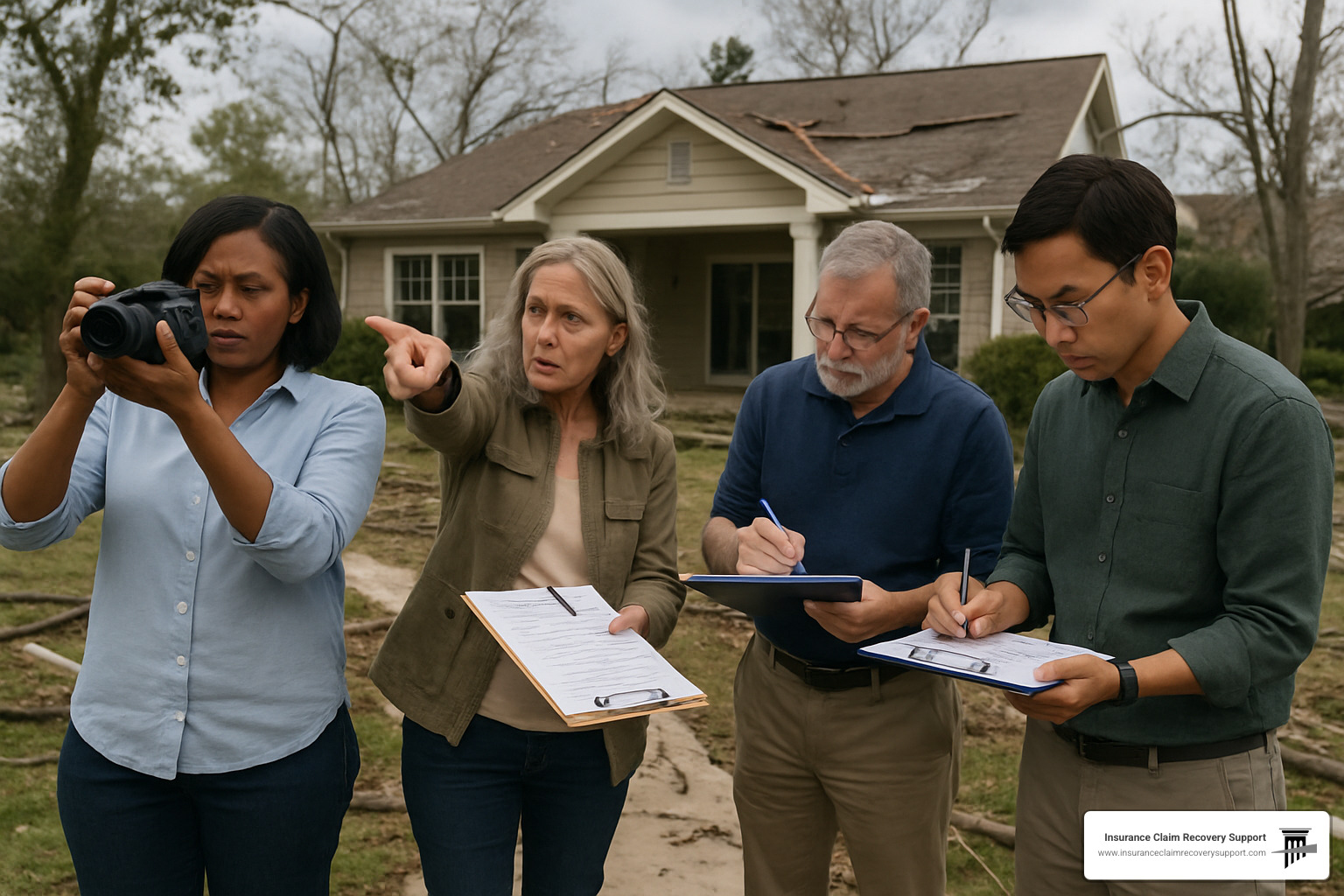
- Safety & Mitigation: Secure the scene, shut off utilities, cover openings. Document before and after mitigation.
- Immediate Notice: Most policies demand written notice within 24–72 hours. Include date, cause, and affected areas.
- Evidence Collection: Photos, videos, drone imagery, witness statements, maintenance logs.
- Repair Estimates: Bring in licensed contractors familiar with insurance pricing software.
- Formal Claim Package: Submit proof of loss, itemized estimates, and supporting documents. In Texas, keep all communication within statutory deadlines.
- Adjuster Inspection: Accompany the insurer’s adjuster and point out every damaged element.
- Review Settlement: Compare insurer estimate to your contractor’s scope. File a supplemental claim if hidden damage or code upgrades appear.
When claim value exceeds roughly $50,000 or the carrier starts disputing coverage, consider hiring a public insurance adjuster. Learn more at How to Settle Property Damage Insurance Claims or our Texas Public Adjuster resource.
Overcoming Delays, Underpayments, and Denials: Dispute Resolution Strategies
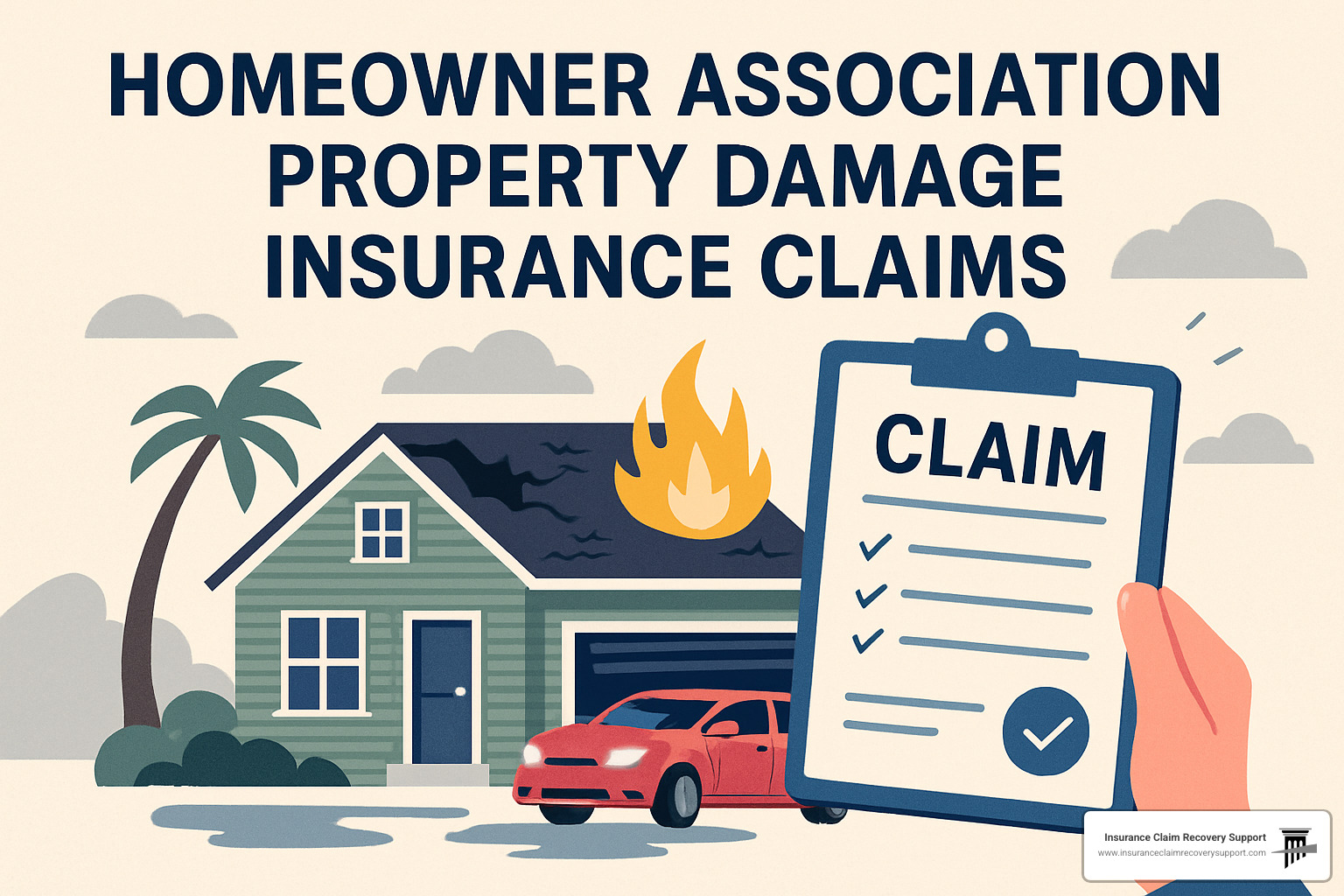
Carriers often slow-walk HOA claims by questioning maintenance, shifting blame to unit owners, or undervaluing repairs.
Common roadblocks:
- Late notice or missing paperwork
- “Wear & tear” exclusions cited for obvious storm damage
- Lowball estimates that ignore current labor & material costs
- Disputes over master vs. HO-6 responsibility
Tools to break the logjam:
- Appraisal: Each side hires an appraiser; an umpire sets final value. Great for price disputes.
- Mediation: Neutral mediator guides a voluntary settlement.
- Bad-Faith Action: Texas statutes penalize carriers that fail to act promptly or fairly.
Bring in experts early—contractors, engineers, forensic accountants—to build a rock-solid file. See Avoid Unnecessary Litigation and our Commercial Property Public Insurance Adjusters page for details.
Proactive Risk Management and Premium Control for HOAs

Preventing losses is the best way to keep premiums in check.
Easy Wins
- Quarterly roof inspections and annual maintenance
- Leak-detection sensors on risers and water heaters
- Clear dryer vents and electrical panels to cut fire risk
- Written storm plans for hurricanes, hail, or tornadoes common to Texas
Claims vs. Premiums
Insurers study your loss ratio. A string of small claims can spike premiums faster than one large, well-documented disaster. Self-fund minor repairs when they’re near the deductible.
Annual Insurance Check-Up
- Bid out coverage every year or two.
- Use brokers who focus on community associations.
- Verify compliance with bylaws and Texas statutes.
- Update valuations and limits.
For multi-family best practices, visit Multi-Family Claims.
Frequently Asked Questions about Homeowner Association Property Damage Insurance Claims
Who pays the deductible for common-area damage?
The association pays first, then recovers through assessments or a dedicated deductible reserve fund. Some communities purchase separate deductible coverage.
What if the master policy limit is exhausted?
The board can levy a special assessment, draw from reserves, or use an umbrella policy. Unit owners with HO-6 loss-assessment protection may claim their share.
When should legal counsel get involved?
Bring in attorneys for coverage denials, six-figure losses, or allegations of board negligence. Most disputes, however, settle through appraisal or mediation without litigation.
Conclusion
Successfully navigating Homeowner Association Property Damage Insurance Claims feels like trying to solve a puzzle where half the pieces are missing and the picture on the box keeps changing. The intricate dance between master policies and individual unit coverage, combined with the various stakeholders involved, creates a minefield of potential costly mistakes that can devastate a community’s finances.
After handling over 500 large loss claims valued at more than $250 million, I’ve seen how the complexity of association insurance can overwhelm even the most dedicated board members. The good news? You don’t have to figure it all out alone.
At Insurance Claim Recovery Support LLC, we’ve made it our mission to level the playing field for homeowner associations throughout Texas and beyond. Our team understands that when storm damage hits your Houston community, fire strikes your Austin property, or water damage floods your Dallas-Fort Worth association, you need advocates who know exactly how to steer the maze of policies, deadlines, and insurance company tactics.
What makes us different? We work exclusively for policyholders – never for insurance companies. This means your community’s interests always come first, and we’re not afraid to fight for every dollar you deserve. Whether you’re dealing with a $50,000 roof repair or a million-dollar catastrophic loss, our expertise in Homeowner Association Property Damage Insurance Claims ensures your settlement reflects the true cost of making your community whole again.
The reality is that insurance companies have teams of adjusters, lawyers, and experts working to minimize their payouts. Shouldn’t your association have the same level of professional representation? Our specialized knowledge of association governance, master policy provisions, and Texas insurance regulations has helped countless communities secure fair settlements while protecting their long-term financial health.
Don’t let the complexity of association insurance claims become another burden for your volunteer board members. From San Antonio to Lubbock, Georgetown to Waco, and across communities in Round Rock and San Angelo, we’ve helped Texas communities recover from disasters and get back to focusing on what matters most – creating great places to live.
Ready to ensure your community gets the settlement it deserves? Contact Insurance Claim Recovery Support LLC today and find how professional representation can transform your claim experience from overwhelming to manageable.
For comprehensive guidance on settling property damage claims and maximizing your recovery, visit our More info about How to Settle Property Damage Insurance Claims page to get started with professional representation that puts your community’s interests first.

